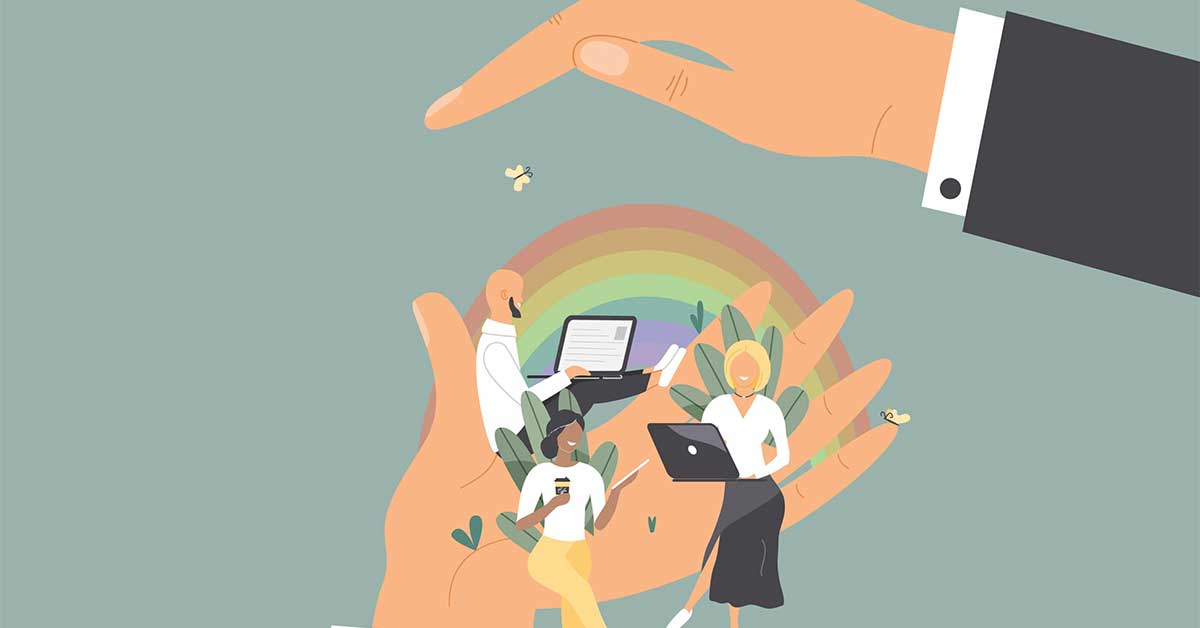In the first part of our series, we provided an overview of the COVID-19 impact on the mental health of the Australian workforce. In our discussion today, we focus on how you can prepare your workplace to become “resilient-ready” and get on the front foot of your employees’ mental health in readiness of uncertain times ahead.
Our Change2020 expert in this area sums it up beautifully and simply with,
“You can’t triage your people’s lack of resilience as the crisis is happening – that’s like saying, we better create an evacuation plan as the fire alarm bell is going off.”
Maree Gardner
As was evidenced in the first part of this series, the global pandemic continues to create high levels of uncertainty, and uncertainty has a direct link to our overall wellbeing. The what and the why for resilience is straight-forward – if your employees’ mental health is flagging, there are direct links to aspects of your operations, where you might see significant dips in production levels or high percentage of absenteeism or staff attrition – risks to your revenue source and rising cost base implications.
Building resilience equips your staff to keep ‘find a way to move forward’ despite continued changing and unpredictable conditions. Making the mental health and wellbeing of your people a priority not only is a worthy investment, but it is also key to help secure your organisation’s long-term sustainability.
Fortunately, we can help you along the road to resilience for your people with a range of services and resources; one service we offer that has proven to be highly effective and applicable across all industry sectors, is the personal resilience plan. At Change2020 we facilitate the creation of these plans based on the three Rs: Refuel, Ready, Reframe.
Refuel
With the rise of remote working there is greater flexibility to incorporate refuelling activities into your working day. Refuelling means to recharge yourself physically-mentally-emotionally with things like exercising and/or stretching, being outside in nature, listening to music, playing with a pet, or playing a musical instrument – whatever recharges your inner batteries. And like other parts of your daily routine these activities need to become ritualised and a non-negotiable part of your daily practices.
Ready
The term “Ready” in the resilience plan refers to a toolbox of techniques that are at hand when you might need them during stressful times at work – tools like utilising your muscles. By tensing our muscles, we mimic our body’s physiological response to stress and anxiety. Then by relaxing them we relieve our body from the stress response and allow our rest and recuperation nervous system to take over.
We also recommend breathing exercises, as research indicates there is a correlation between deep breathing and calming our emotional reactions. The simple 4×4 method, breath in (nasally) for a count of 4, hold it for a count of 4, exhale (mouth) for a count of 4 – repeat 4 times. There are many more techniques available within RRR Program which can be applied regularly, easily and often while sitting at your desk or carrying out your daily work activities.
Reframe
For the reframing section of the personal resilience plan, encourages you to identify thinking errors because it is these errors that can cause faulty thinking. Classic examples of faulty thinking: catastrophising – when we blow things out of proportion and immediately go to the worse-case scenario; or black and white thinking – when it is all or nothing thinking with no movement for negotiation; and personalising thinking – at the end of the day, it’s my fault.
In our resilience program, we recommend that as soon as you notice any thinking errors, firmly but gently say to yourself – STOP. Even the action of recognising the thinking errors helps to distance you from them. Another reframe technique is to ‘catch-out the lie you are telling yourself’ otherwise known as a limiting belief. Replace your limiting beliefs with expanding beliefs where you flip the negative into a positive or a worry into a possibility. Your thoughts become your beliefs which, in turn, become your mindset. Your mindset fuels your actions, which create your reality. Choose a positive mindset.
We have just touched on some of the areas of our RRR Resilience Program and there are many more techniques and much more information available, and we encourage you to reach out to our expert here.
In our next and final instalment in this series, we explore more about improving the psychological safety of your organisation and its people – we hope you join us then.




